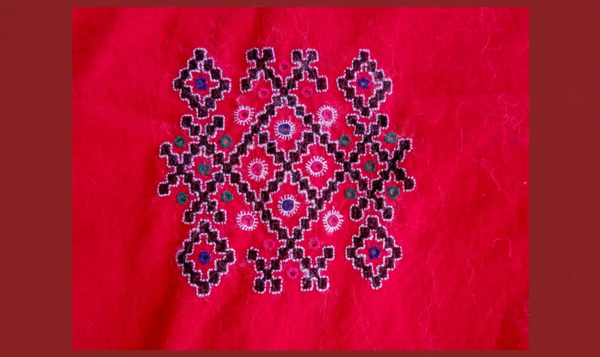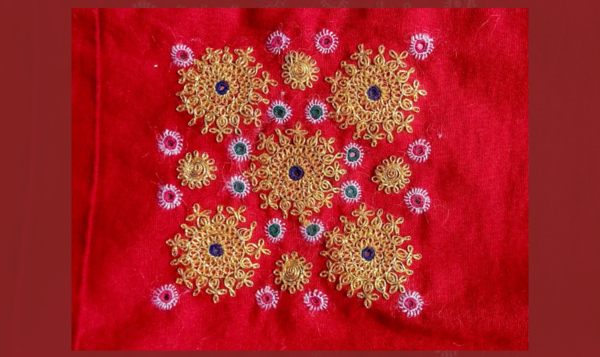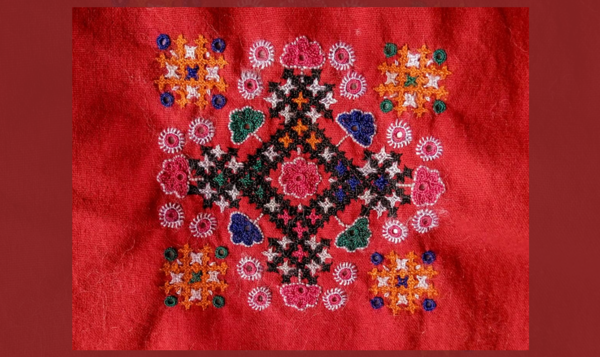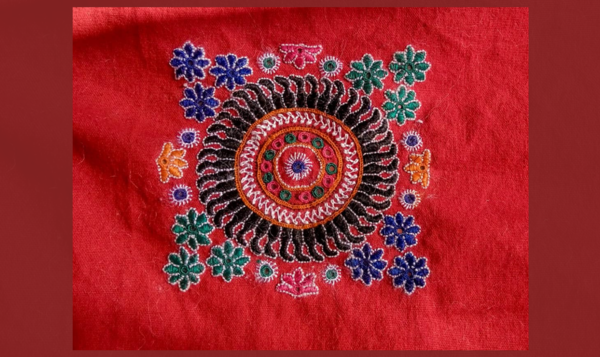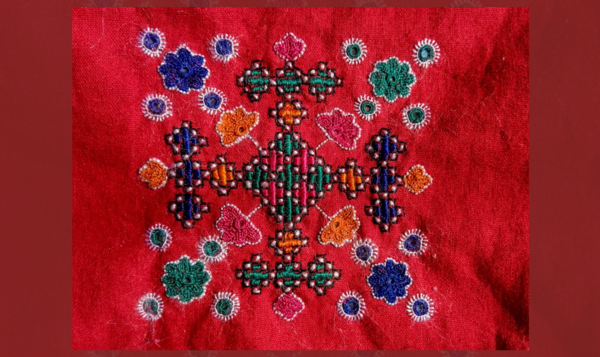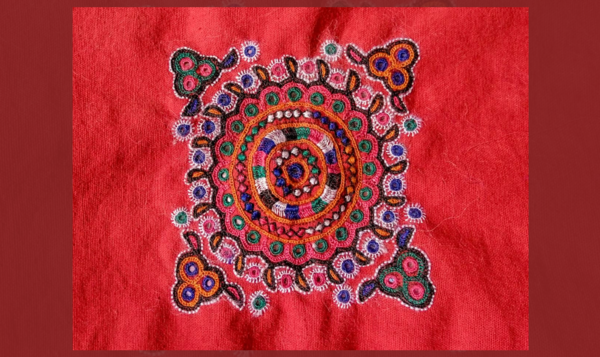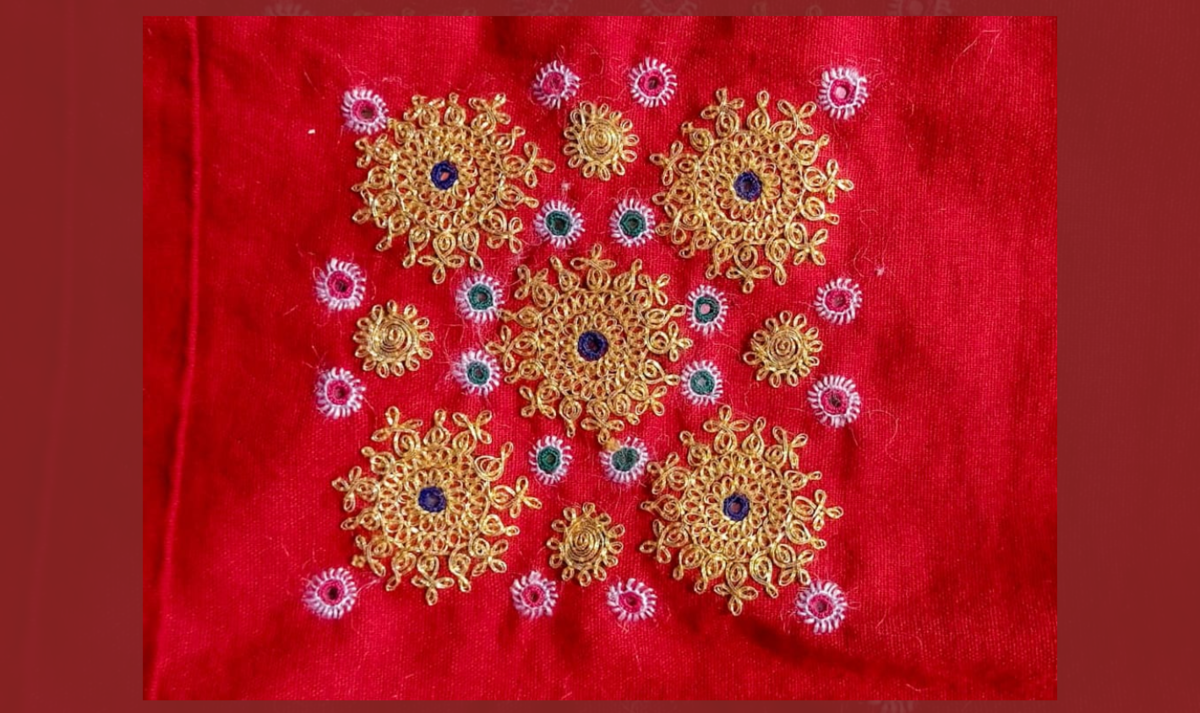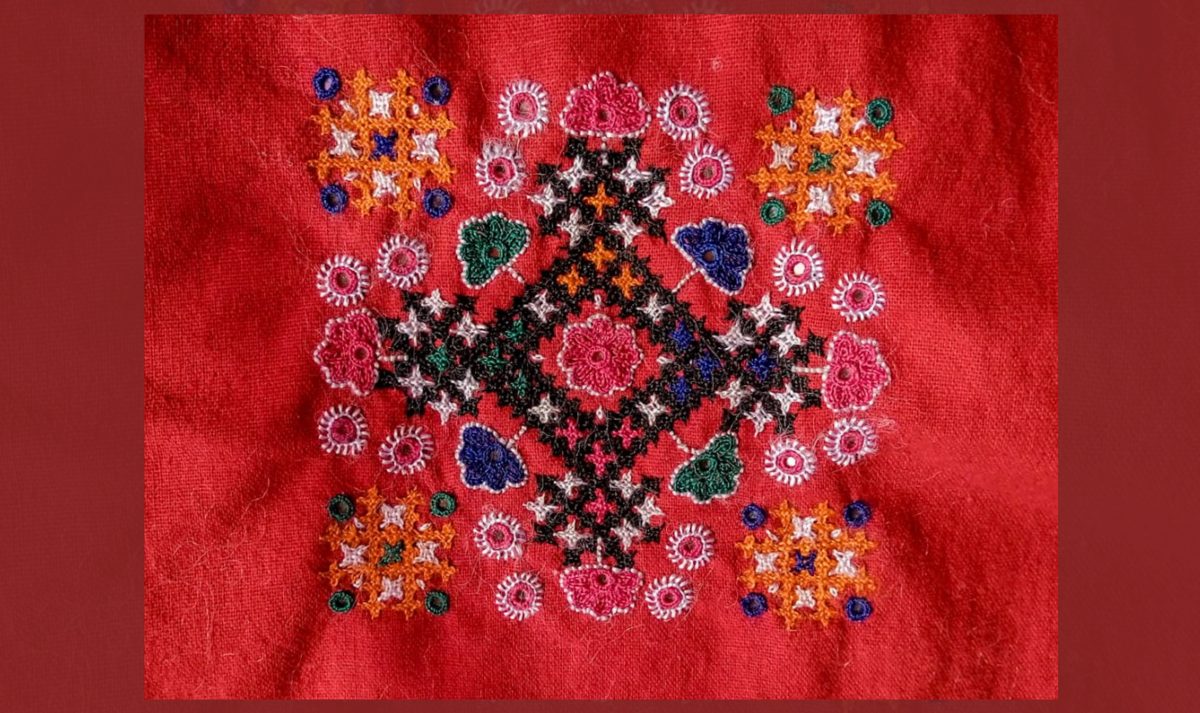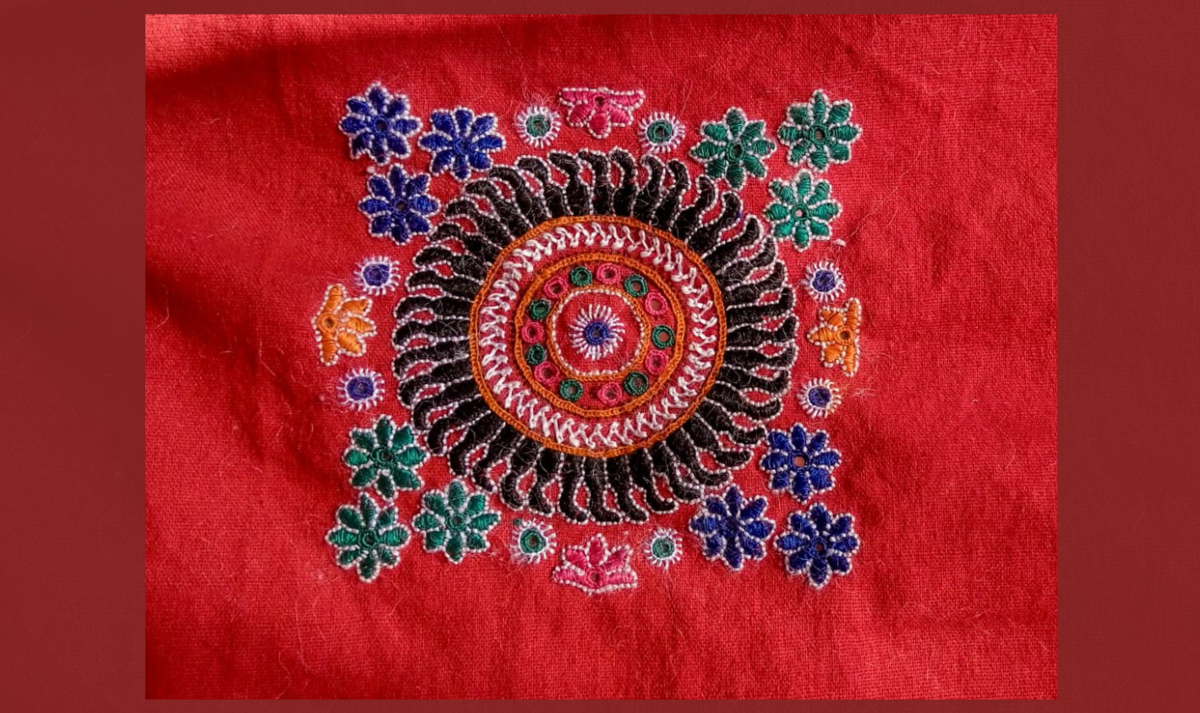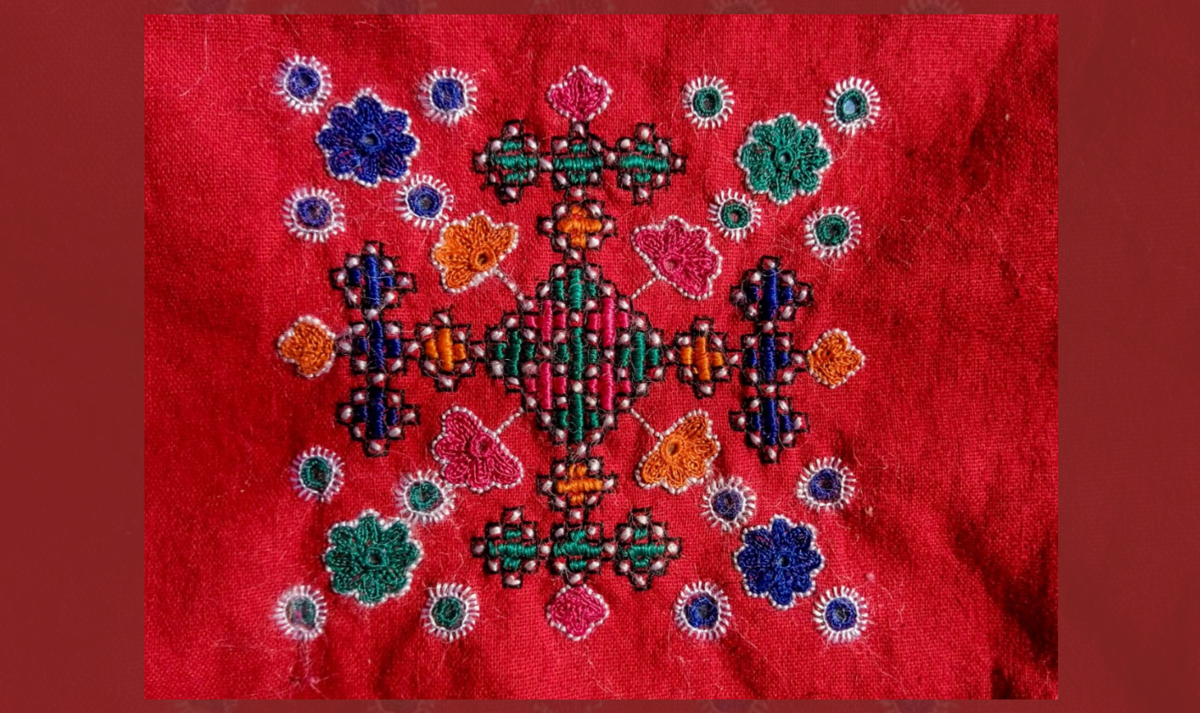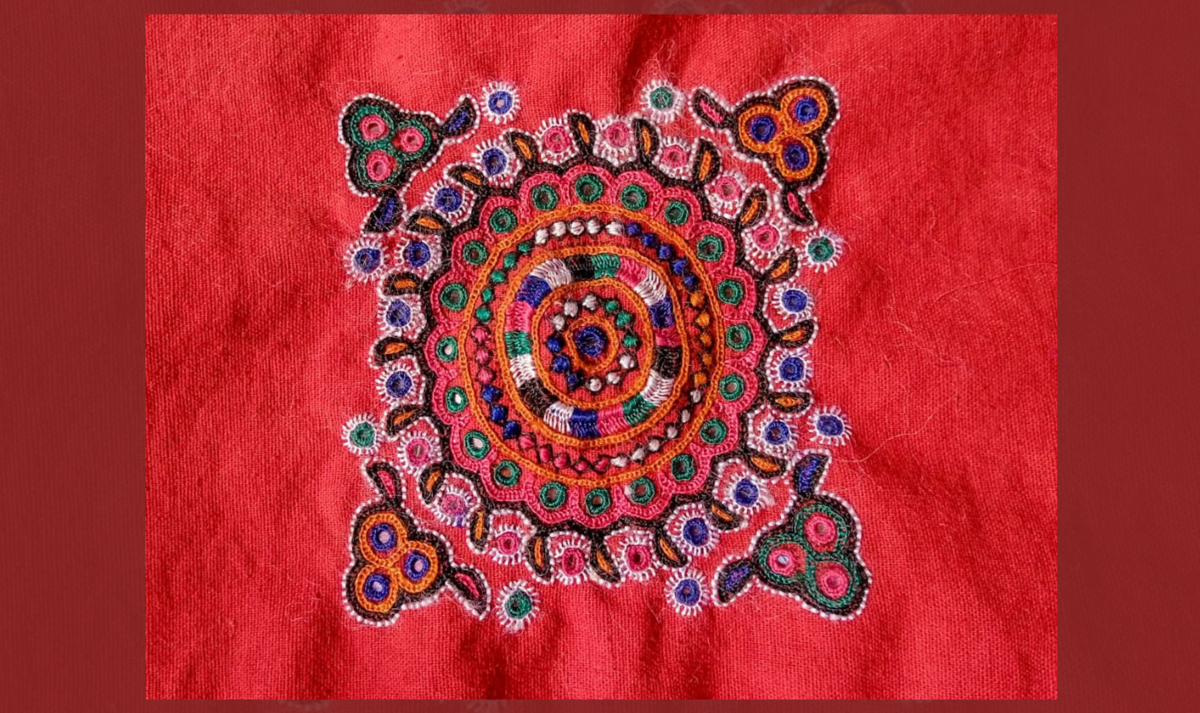News
Mutva Embroidery from Kutch, India
- NameJyoti Shukla
- Date11 Dec 2023
- CategoryICH News

The men from the Mutva community are known as Maldharis (maal refers to cattle and dharis who keep these animals) and are one of the nomadic pastoral communities in the Banni grasslands of Kutch. The women of the community manage the household and have all the artistic abilities. They have been well versed in the practice of thread work. The collective work of all the female members of the community is known as Mutva embroidery.
The Mutva embroidery is defined by detailed stitches, mirror work, ornamentation, and colors. There are more than 25 styles in this embroidery, which are done using two types of stitches called Pakko and Kachcho. The styles use various combinations of the two stitches. Some of the names of the designs are the following: Pakko, Chopad, Dhoran, Kaaro Bharat, Tekke Jo Junu, Katari, Golado kacho, Gotav, Mokko, etc. The use of elements, including flowers, geometrical designs, or shapes, as foundations of the embroidery is common. These are done on different types of textiles, including cotton, silk, etc.
The Living & Learning Design Centre (LLDC) in Ajrakhpur village, Kutch, has very well documented the work of the Mutva community and embroidery. It states, ‘Mutva embroidery is known for its tiny stitches and equally tiny mirrors. We have identified 18 styles of Mutva embroidery so far- each with its own distinctive features. Craftswomen refer to these styles as Bharat. Each Bharat uses only one primary stitch to create either the entire Bharat or to create its distinctive features. For Mutva craftswomen, a stitch is either a Pakko stitch or a Kachcho stitch. They use the term Pakko, meaning strong, durable, to denote stitches that lock. The opposite of Kachcho, meaning fragile. They do not follow the locking principle’.((Mutva Community, Living & Learning Design Centre (LLDC), Shrujan. Retrieved from https://shrujanlldc.org/wp-content/uploads/2018/01/MUTVA.pdf)) It further shares that ‘Mutva embroidery is a celebration of abundance. There are 34 stitches, many of which have several variations. There are three sizes of mirrors and nine different ways of ornamenting them, making a total of 27 kinds of mirror ornamentation. 34 stitches, 27 kinds of mirror ornamentation, 18 Bharat, and their innumerable combinations- all these make the Mutva embroidery universe indefinitely vast and varied.((Mutva Community, Living & Learning Design Centre (LLDC), Shrujan. Retrieved from https://shrujanlldc.org/wp-content/uploads/2018/01/MUTVA.pdf))
The threadwork practiced by the community is done entirely by women and passed down through them to the next generation. Daughters start learning embroidery at an early age and decorate their pieces of clothing for marriage with their favorite designs. These can be seen on different garments, including quilts, scarves, other garments, etc. The Mutva women are often known for their Pakko stitches, and many of the clothes for ceremonies or special occasions have intricate Pakko threadwork reflecting high craftsmanship abilities.
Numerous institutions in Kutch have worked to document this rich heritage and preserve it for future generations. Organizations like Shrujan and Khamir have taken numerous steps to maintain the craftsmanship and share it with society. The Living & Learning Design Centre (LLDC) in Ajrakhpur village houses a permanent exhibition on all the distinct communities of Kutch, including Ahir, Rabaari, Sodha, Meghwaad Maru, Mochi, Raau Node, Jats, Meghwaad Maarwaada, Haalepotra and Mutva community. This is to bring their collective cultural heritage of embroideries practiced by them.
QUICK MENU
QUICK MENU 원하시는 서비스를 클릭하세요!
There is no registered quick menu.
